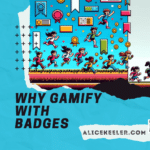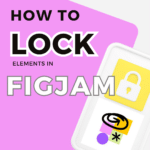Reflections on Classroom Management
I think back to when I was in the classroom and the type of teacher that I was, as well as the teachers who I was surrounded by. Some were extremely strict and wouldn’t even let kids talk in class. Some were what I like to refer to as “loosey goosey,” where it seemed like there were no protocols or even management strategies. I am smack in the middle. I create classroom ideals with my students together, not set rules by myself for people to follow (for more information on how to do this, check out my guest blog that I did for Pear Deck on cultivating culturally responsive classroom ideals). We have empathetic conversations about topics we want to learn about as it relates to our subject (math) and made community agreements to treat each other with respect. We spoke about the nature of consent, and how consent in education often includes conversations and samples of work as well–I did not share student work as exemplars without speaking with the student beforehand first. We had a thriving classroom of students who came ready to learn and ready to collaborate.
At the same time…if a stapler was thrown at my head or if a student was endangering another student, I did require administration to step in. I also wasn’t referral shy when it came to serious offenses and repeat offenders (primarily because the referral served as documentation in my district). I was warm, but firm. My students knew what was allowed and also where I drew the line.
Now that I am an instructional coach in a district that is exclusively virtual for the time being, I’ve been working with teachers to transfer face to face classroom management strategies to a virtual learning environment. A strategy I used (and continue to use) face to face is the 3-2-1 strategy, and I am currently working on adjusting this for a virtual learning environment. 3-2-1 operates on the premise of “three minutes, two reasons, one reinforcement.” The steps and protocols are below.
3-2-1 Style of Classroom Management
THREE Minutes – Communicate with the misbehaving student that they are in a three minute “cool down” session. Cool down means that the student takes three minutes to relax, take a break from work, and just be with their thoughts. The purpose of the cool down session is to redirect behavior and give the student a chance to decrease internal stimuli.
Face to Face: In a face to face environment this could look a couple of different ways. You could physically go over to the student and mention to them, discreetly, that they are being put in a cool down session. If you’re uncomfortable with that, consider slipping the student a card or token of sorts that communicates to the student that due to misbehavior they are now in a cool down session. However, I did prefer to do this with students privately (either after class or during homeroom time) so that attention was not on them. My introduction speech whenever I had to administer a cool down went something like this…
“Hi (student), I’ve noticed that you might be having a bit of a tough day. You weren’t on task and I’m worried that you didn’t get as much out of the lesson as you should. Together, we’re going to go into a three minute cool down to see what I can do to best support you.”
Notice how the language is not accusatory and doesn’t place blame on the student because the emphasis is truly on supporting the student. Also notice how I am going into the cool down with the student and taking three minutes to pause myself, which shows that we are both in this together.
Virtual: I’ve seen much success with this during asynchronous time or student check-ins. The teacher and the student will do the cool down together. The same speech is given, and the students and the teacher will take three minutes to breathe, sit with their thoughts, and gather these thoughts for the next portion.
TWO Reasons – The teacher AND the student give two reasons as to what happened that led up to the assignment of the cool down. Both parties are given space to speak their truths and have the chance to have their experiences validated.
Face to Face: It might go something like this…
Teacher: “In class today, I noticed that you got frustrated and crumpled up a piece of paper and threw it at a student. Then when I asked you why you threw the piece of paper, you hid under your desk. If you could, explain to me why you did that? And if you don’t want to, what could we do to make sure this doesn’t happen again?”
Student: “I’m sorry for what I did today. I forgot my math materials at home and I was embarrassed because it seemed like everyone else had theirs. I hid under my desk because I didn’t want you to notice that I didn’t have my stuff.”
Virtual: Exactly the same as face to face, but via screens/technology instead of in the classroom.
It’s important to note that if a student doesn’t want to speak or share their experience during this time, they do not have to, but you should absolutely share what you observed because it lets the student know that you care about them and the behavior you saw was out of line. This is used as a holding space to clear the air if needed. Once this is accomplished, you can move onto the “one” stage.
ONE Reinforcement – Together, the teacher and the student will create a reinforcement for the next class so that the behavior doesn’t happen again.
Face to Face: There are so many reinforcements you could do in a face to face classroom but the general rule of thumb is that the teacher and student need to be in agreement. When this happens, you get the most buy-in from the student. Personally, I am a fan of activity reinforcers. Activity reinforcers involve allowing students to take part in their preferred activities if they behave appropriately and make progress. This is especially effective if they are allowed to choose a classmate with whom they can, for example, play a game or spend time on the computer with. I also love sending a positive letter or phone call home to parents praising students’ progress as a reinforcement strategy.
Virtual: This is a tricky one because virtual classroom incentives are so much different than face to face classroom incentives. However, I’ve found this resource a goldmine for incentives in a virtual learning environment.
Be Consistent
Students thrive on routine. Establishing a distinct classroom routine with your students helps them know exactly what to expect, and 3-2-1 could be part of that protocol. The ability to communicate your classroom management strategy to your students and the expectations you hold for them can cultivate a wonderful classroom environment and collaborative working atmosphere.
About the Author

Victoria Thompson is a STEM Integration Transformation Coach at Technology Access Foundation–a nonprofit leader redefining STEM education in public schools–and a consultant for Ignite EdTech. She has been in education for five years and began her journey teaching fifth and sixth grade math and science in Summerville, SC. After completing her masters degree in curriculum and instruction she moved to the Seattle, WA area in 2018, where her career has pivoted to focusing on STEM integration in schools, K-12 mathematics instruction with research on decolonizing mathematics curriculum for teachers and learners, creating inclusive math environments, and using technology to bridge equity gaps in math education.







